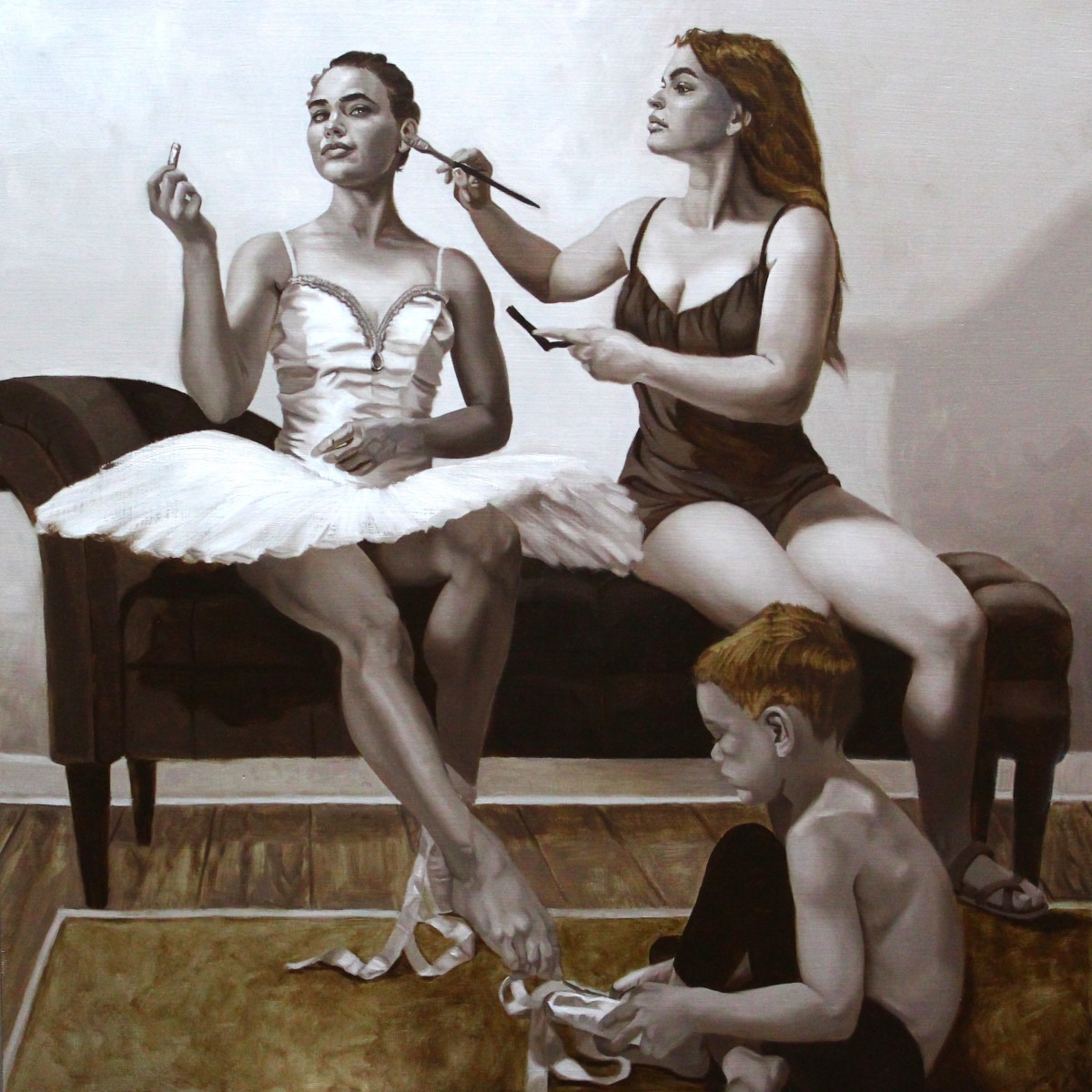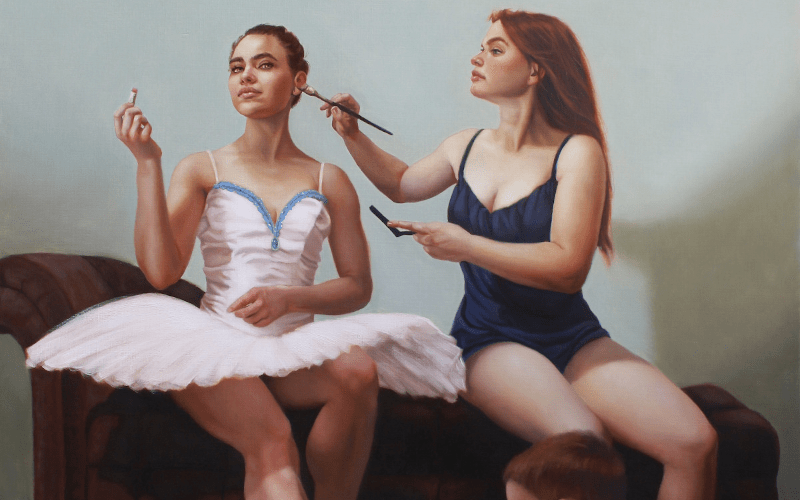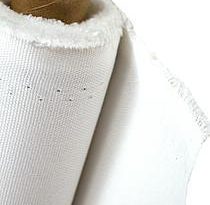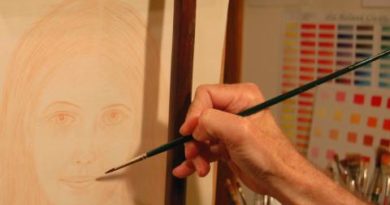Star of the Dance
This article continues the exploration of various techniques used by Samuel Shelton.
In this small portrait, 9×12, I used the following earth colors. Nicosia Green, Red Iron Hematite, Ercolano Red, Orange Ocher, Brazilian Violet, Roman Black Earth, and Treehouse White. When painting with ancient colors I take into account that they tend to be thicker, but also not as opaque as modern colors. The particle size is a lot larger in these pigments and when dry on the canvas they have a tooth to them almost like a fine sandpaper. This portrait was done with a direct method but in two passes. The first was heavy and the second I used a glaze by rubbing walnut gel onto the whole surface in order to lubricate it and bring back the sunken areas. Into this wet surface I used the same ancient earth colors to glaze the final product.

In the following painting, Star of the Dance, I used the following colors but mulled them myself from raw pigment in walnut oil: Nicosia Green, Red Iron Hematite, Ercolano Red, Orange Ocher, Brazilian Violet, Roman Black Earth, and Treehouse White.
I started the painting with a raw umber and white underpainting on an umber toned ground. After this I rubbed each section I was going to paint with walnut oil to create a glaze. Into this wet surface I painted a local color glaze letting the underpainting shine through and then immediately added thicker color particularly in the lights, but also selectively in the darks. Brazilian Violet is a great shadow color for glazing over an underpainting. Also the use of just walnut oil as my glaze medium proved to provide a very soft look in the final analysis. I also cut each color in half with impasto medium which added to the soft luminous look. This is so far my favorite process to painting. It produces a glowing look to the painting that is unachievable with a direct method of painting. One glaze will do it so long as you add more paint into the glaze which results in more opaque lights and transparent shadows.






